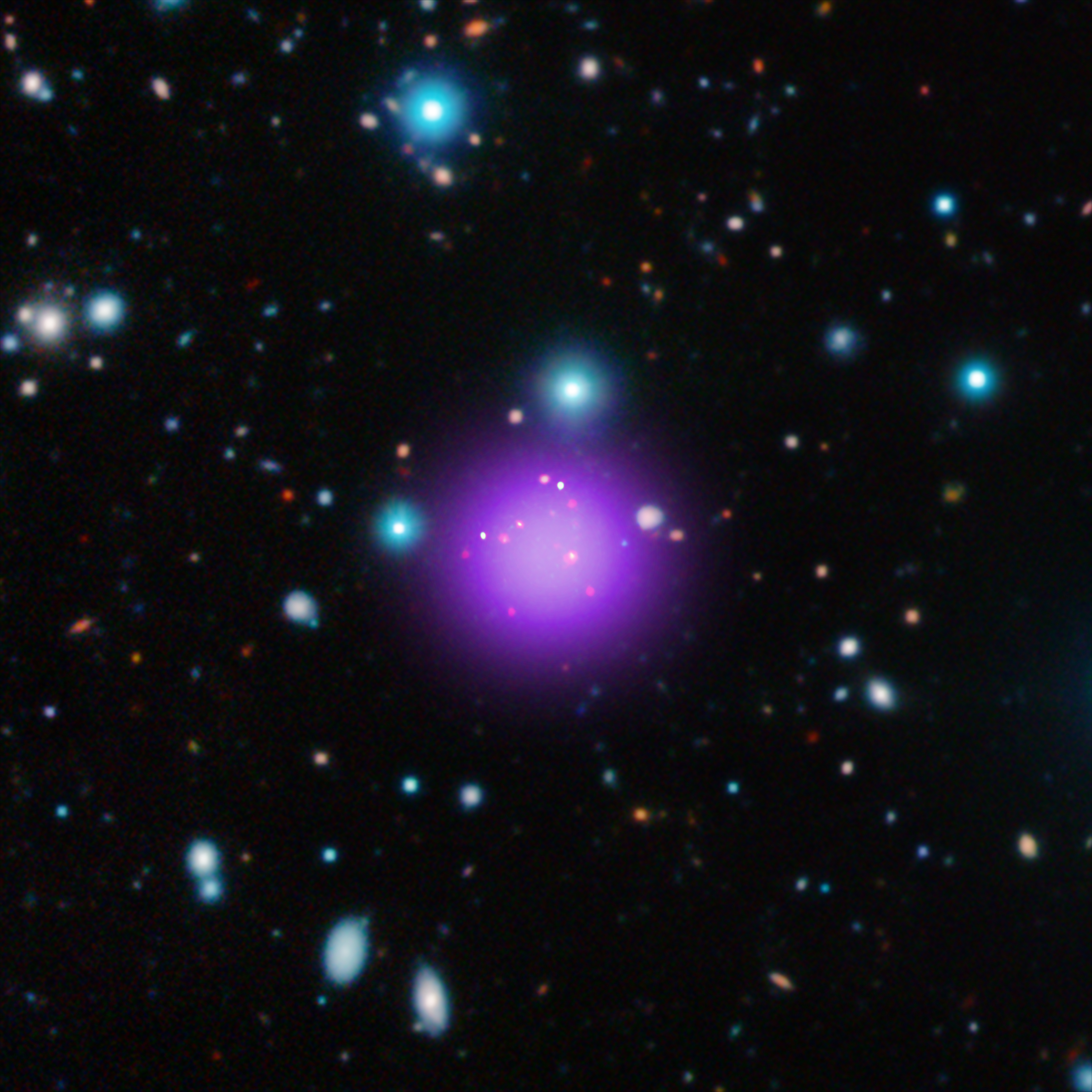Galaxy Cluster 11.1 Billion Light-Years from Earth Is Most Distant Ever Seen

NASA has just discovered a group of galaxies far, far away — so far, in fact, that it set a new record for the most distant ever discovered. The cluster of galaxies, named CL J1001+0220 (or CL J1001 for short), resides a whopping 11.1 billion light-years from Earth. Astronomers found the distant cluster of galaxies using a combination of observations from NASA's Chandra X-ray Observatory and several other space telescopes.
Of the 11 galaxies in the cluster, nine appear to be experiencing a firestorm of new star births. "This galaxy cluster isn't just remarkable for its distance, it's also going through an amazing growth spurt unlike any we've ever seen," Tao Wang of the French Alternative Energies and Atomic Energy Commission (CEA) and lead investigator in the discovery, said in a statement.
CL J1001 appears to be a newborn galaxy cluster in its earliest stage of evolution, something astronomers have not witnessed before, NASA officials said in a statement. Because it takes light 11.1 billion years to reach Earth from this cluster, studying this distant galactic group provides astronomers with a window into the past. The discovery of CL J1001 means that the earliest galaxy clusters formed around 700 million years sooner than previously thought. [The X-Ray Universe as Seen By Chandra Observatory (Gallery)]
The only crowds of galaxies known to exist farther away than CL J1001 are loosely packed protoclusters, or collections of galaxies that aren't close enough to be considered a true cluster. To qualify as a cluster, the galaxies must be bound together by gravity. CL J1001 is now the earliest example of galaxies that have come together to form a gravitationally bound cluster.
"It appears that we have captured this galaxy cluster at a critical stage just as it has shifted from a loose collection of galaxies into a young, but fully formed galaxy cluster," study co-author David Elbaz said in the statement.
The discovery of this newly formed cluster in the midst of a baby boom of star births suggests that more star formation happens after galaxies join a cluster than when they exist in isolation. Outbursts of new star formation are also more rapid and violent in a cluster, the study suggests.
"We think we're going to learn a lot about the formation of clusters and the galaxies they contain by studying this object," said co-author Alexis Finoguenov of the University of Helsinki in Finland, "and we’re going to be searching hard for other examples."
Get the Space.com Newsletter
Breaking space news, the latest updates on rocket launches, skywatching events and more!
Wang and colleagues published the results online today (Aug. 30) in The Astrophysical Journal.
Email Hanneke Weitering at hweitering@space.com or follow her @hannekescience. Follow us @Spacedotcom, Facebookand Google+. Original article on Space.com.
Join our Space Forums to keep talking space on the latest missions, night sky and more! And if you have a news tip, correction or comment, let us know at: community@space.com.

Hanneke Weitering is a multimedia journalist in the Pacific Northwest reporting on the future of aviation at FutureFlight.aero and Aviation International News and was previously the Editor for Spaceflight and Astronomy news here at Space.com. As an editor with over 10 years of experience in science journalism she has previously written for Scholastic Classroom Magazines, MedPage Today and The Joint Institute for Computational Sciences at Oak Ridge National Laboratory. After studying physics at the University of Tennessee in her hometown of Knoxville, she earned her graduate degree in Science, Health and Environmental Reporting (SHERP) from New York University. Hanneke joined the Space.com team in 2016 as a staff writer and producer, covering topics including spaceflight and astronomy. She currently lives in Seattle, home of the Space Needle, with her cat and two snakes. In her spare time, Hanneke enjoys exploring the Rocky Mountains, basking in nature and looking for dark skies to gaze at the cosmos.









